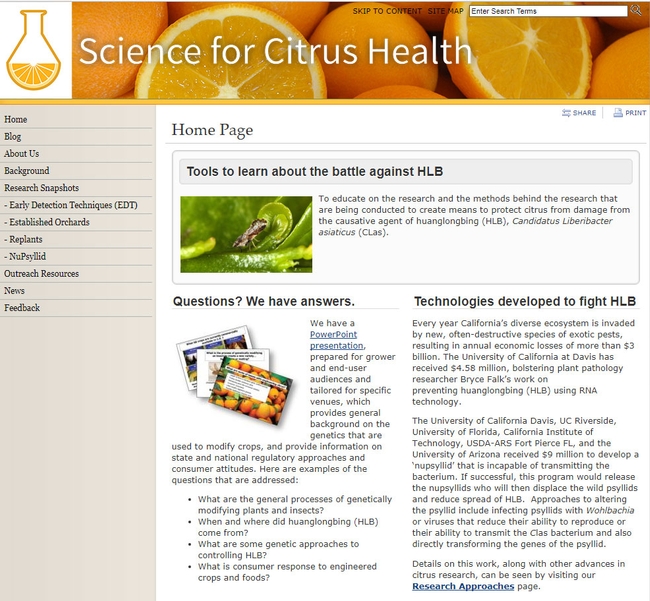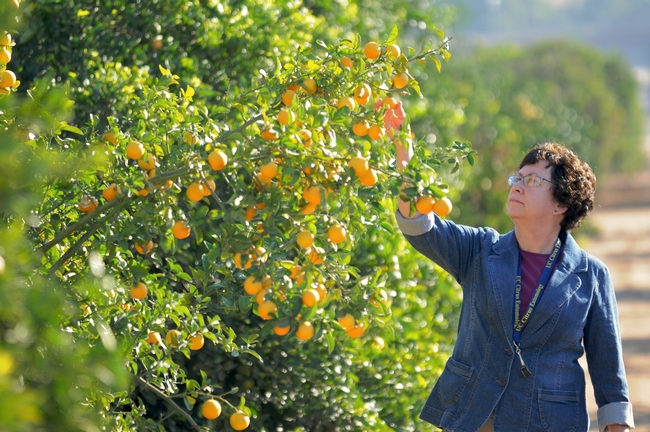UC puts high science online in easy-to-read citrus research updates
California citrus farmers have their ears perked for all news related to Asian citrus psyllid (ACP) and huanglongbing (HLB) disease, but the very latest advances have been available only in highly technical research journals, often by subscription only.
UC Cooperative Extension scientists are now translating the high science into readable summaries and posting them on a new website called Science for Citrus Health to inform farmers, the media and interested members of the public.
“The future of the California citrus depends on scientists finding a solution to this pest and disease before they destroy the industry,” said Beth Grafton-Cardwell, UC Cooperative Extension citrus entomology specialist. “Our farmers want to stay on top of all the efforts to stop this threat.”
Grafton-Cardwell and UC Cooperative Extension biotechnology specialist Peggy Lemaux are the two scientists behind the new website. When scientists make progress toward their goals, Grafton-Cardwell and Lemaux craft one-page summaries with graphics and pictures to provide readers with the basics.
For example, the website outlines scientific endeavors aimed at stopping the spread of huanglongbing disease by eliminating the psyllid's ability to transfer the bacterial infection. This section is titled NuPsyllid, and contains summaries of three research papers including one by UC Davis plant pathologist Bryce Falk.
Falk is collecting viruses found in Asian citrus psyllid; so far he has identified five. He is looking into the potential to utilize one of the viruses as is or modify one of the viruses to block the psyllid's ability to transmit the bacterium. For example, the virus might out compete the bacterium in the psyllid's body.
Another focus of the website is HLB early detection techniques (EDTs). If HLB-infected trees are found and destroyed before they show symptoms, ACP is less likely to spread the disease to other trees. EDT research described on the website includes efforts to detect subtle changes in the tree that take place soon after infection, such as alterations in the scents that waft from the tree (studied by UC Davis engineer Cristina Davis), changes in the proteins in the tree (studied by UC Davis food scientist Carolyn Slupsky) and starch accumulation in the leaves (studied by UC farm advisor Ali Pourreza).
Other research areas on the Science for Citrus Health website are solutions for established orchards and replants.
As more research is published, more one-page descriptions will be added to the website. The website contains a feedback form to comment on the science and the summaries.



Posted by jim Ellis on July 21, 2017 at 5:41 AM